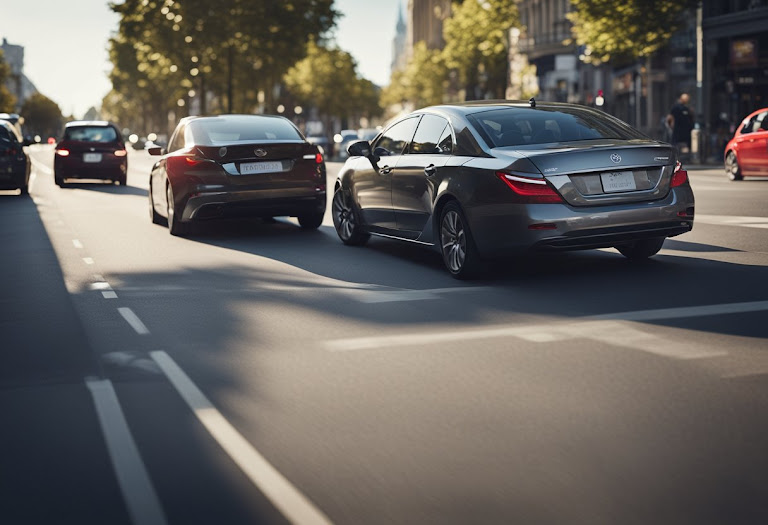
Understanding Different Types of Car Accidents and Prevention Strategies
Car accidents are an unfortunate reality on the roads, occurring in various forms, each with distinct characteristics and risks. From rear-end collisions to side-impact crashes, different types of accidents pose unique dangers and require specific prevention strategies.
An effective approach to reducing car accidents involves both awareness and proactive measures. Drivers who follow safety protocols, remain vigilant, and adopt defensive driving techniques are more likely to avoid accidents. Advanced driver-assistance systems (ADAS), like automatic emergency braking and lane-keeping assist, can help mitigate risks.
Types of Car Accidents
Car accidents can occur in various forms, each presenting different risks and consequences. It’s vital to understand these accident types and their common causes to develop effective prevention strategies.
Head-On Collisions
Head-on collisions happen when two vehicles traveling in opposite directions crash front-to-front. These accidents often occur at high speeds, making them particularly severe and frequently resulting in serious injuries or fatalities. Distracted driving, impaired driving, and wrong-way driving are common causes.
Rear-End Accidents
Rear-end accidents occur when a vehicle crashes into the vehicle in front of it. Common causes include tailgating, sudden stops, distracted driving, or poor weather conditions reducing visibility and road traction. These collisions often lead to whiplash injuries for the occupants of the front vehicle.
To prevent rear-end accidents, drivers should maintain a safe following distance and stay vigilant.
Side-Impact Crashes
Side-impact crashes, or T-bone accidents, occur when the front of one vehicle hits the side of another. These accidents typically happen at intersections and can cause significant injuries to the occupants on the side of the vehicle hit. Running red lights, ignoring stop signs, or failing to yield are common causes.
Multi-Vehicle Pile-Ups
Multi-vehicle pile-ups involve several vehicles crashing into each other, usually on highways or during poor weather conditions like fog or ice. These accidents are particularly dangerous due to the high speeds and multiple impacts involved. Factors include reduced visibility, sudden braking, and roadway congestion.
By understanding these common types of car accidents, drivers can take proactive measures to reduce their risk on the road.
Common Causes of Car Accidents
Car accidents often stem from a combination of factors such as human error, environmental conditions, and road design issues. Understanding these causes is crucial for implementing measures to prevent them.
Distracted Driving
Distracted driving includes activities such as texting, talking on the phone, eating, or adjusting the radio while driving. These actions divert attention from the road, increasing the likelihood of accidents. Texting is one of the most dangerous distractions, as it combines visual, manual, and cognitive distractions. Hands-free devices, although safer, can still pose risks by diverting focus.
Speeding
Speeding reduces the driver’s ability to react quickly to unexpected events and increases stopping distances. At higher speeds, the severity of crashes also escalates.
Speed limits are set based on road conditions, traffic volume, and accident history. Exceeding speed limits compromises safety margins designed to protect all road users.
Driving Under the Influence
Driving under the influence of drugs or alcohol impairs judgment, coordination, and reaction times. This impairment drastically increases the probability of accidents.
Alcohol: Reduces the brain’s ability to function properly. Drugs: Both prescription and illicit drugs can disrupt cognitive and motor skills.
Weather Conditions
Adverse weather conditions such as rain, snow, fog, or ice can severely impact driving safety. These conditions reduce visibility, decrease tire traction, and increase stopping distances.
Rain: Can cause hydroplaning. Snow/Ice: Leads to slippery road surfaces. Fog: Reduces visibility significantly.
Prevention and Safety Measures
Effective prevention and safety measures in car accidents revolve around good driving habits, advanced vehicle features, and strict regulations.
Safe Driving Practices
Safe driving begins with maintaining focus and avoiding distractions like mobile devices. Drivers should adhere to speed limits to prevent loss of control, particularly in adverse weather conditions. Defensive driving techniques, such as maintaining a safe following distance and anticipating other drivers’ actions, can also reduce accident risks.
Vehicle Safety Features
Modern vehicles come equipped with advanced safety features designed to protect occupants. Anti-lock Braking Systems (ABS) help maintain control during sudden stops by preventing wheel lock-up. Electronic Stability Control (ESC) assists in maintaining vehicle control on slippery roads or during abrupt maneuvers. Airbags and seatbelt pretensioners provide critical protection in collisions by reducing the impact force on occupants.
Legal Regulations and Enforcement
Strict enforcement of traffic laws deters reckless driving behaviors. Legal requirements such as mandatory use of seatbelts and adherence to speed limits are fundamental. Traffic cameras and police patrols monitor compliance and issue fines for violations. Legislation also mandates the inclusion of specific safety features in vehicles.
Legal Aspects and Representation
Navigating car accident claims requires an understanding of liability, the insurance claims process, and the role of specialized lawyers. These elements are crucial for ensuring fair compensation and protecting your rights after an accident.
Understanding Liability
Liability determines who is legally responsible for an accident. It can be established through police reports, witness statements, and evidence such as traffic camera footage. In Madison, the at-fault driver is typically held liable, meaning their insurance pays for damages and injuries.
Insurance Claims Process
Filing an insurance claim involves notifying the insurer, gathering required documentation, and cooperating with investigations. First, inform your insurance company about the accident. Provide details like date, time, location, and any available evidence, such as photos and witness contacts.
Insurance companies in Madison often require medical records, repair estimates, and police reports to process claims.
Role of Car Accident Lawyers
Car accident lawyers specialize in representing victims to ensure they receive fair compensation. In Madison, these professionals assist with gathering evidence, negotiating with insurance companies, and representing clients in court.
They help determine liability, calculate damages, and handle paperwork. Attorneys like those from Car Crash Lawyers Madison have local expertise, which can be advantageous. Hiring a lawyer ensures experienced guidance through the legal system and can increase the likelihood of a favorable outcome.
Understanding these legal aspects can make dealing with the aftermath of a car accident more manageable and protect one’s rights effectively.
The post Understanding Different Types of Car Accidents and Prevention Strategies appeared first on My Car Heaven.


